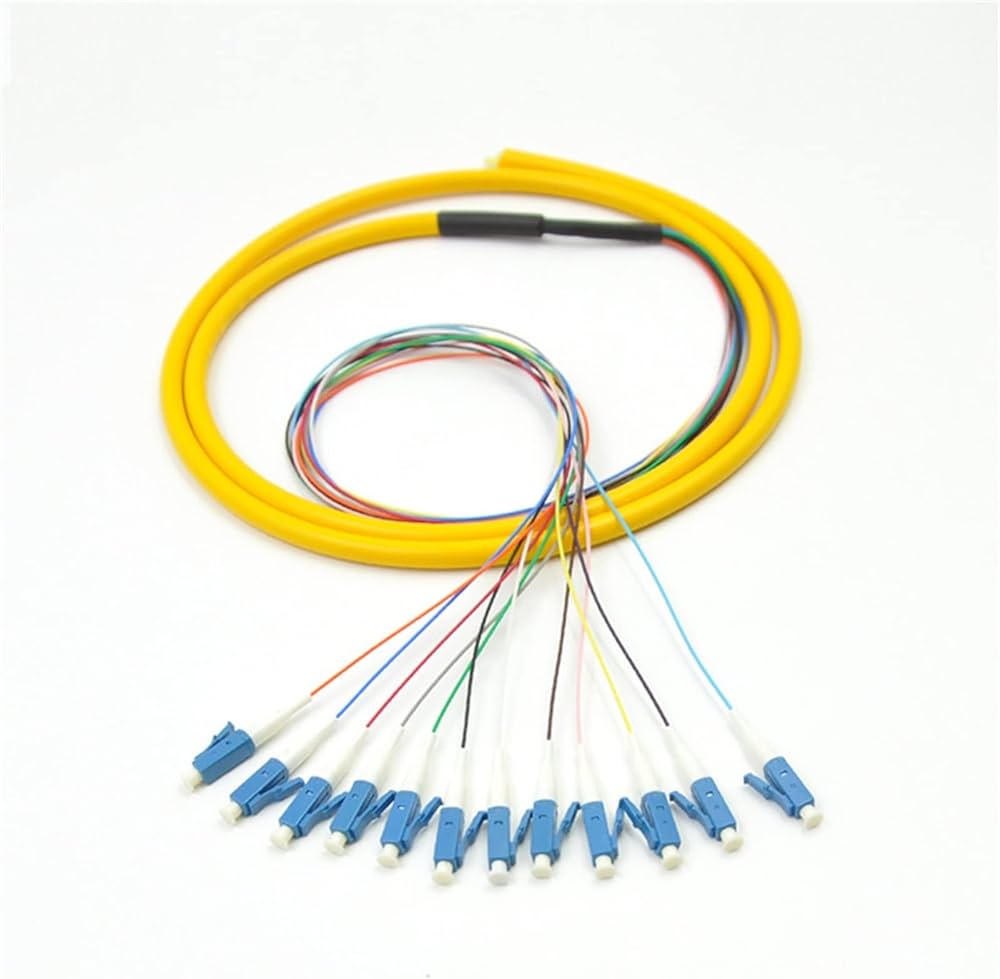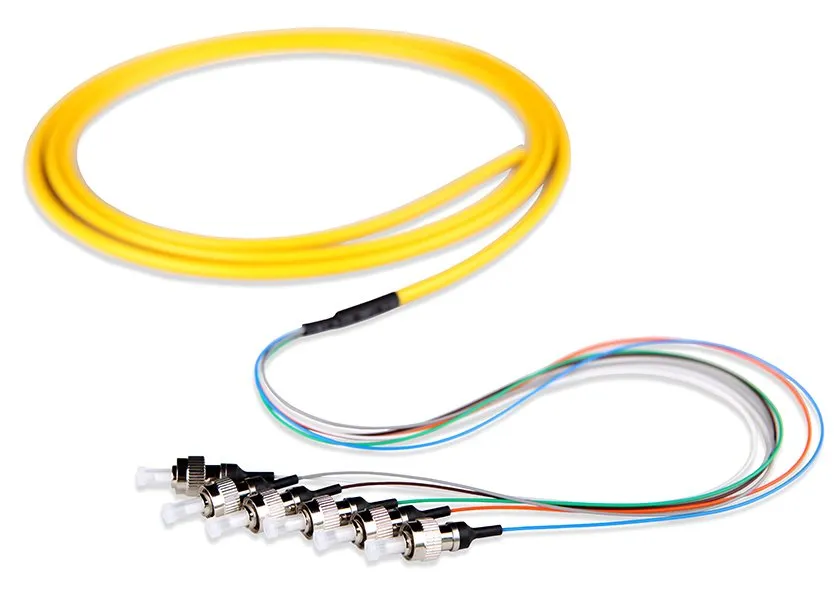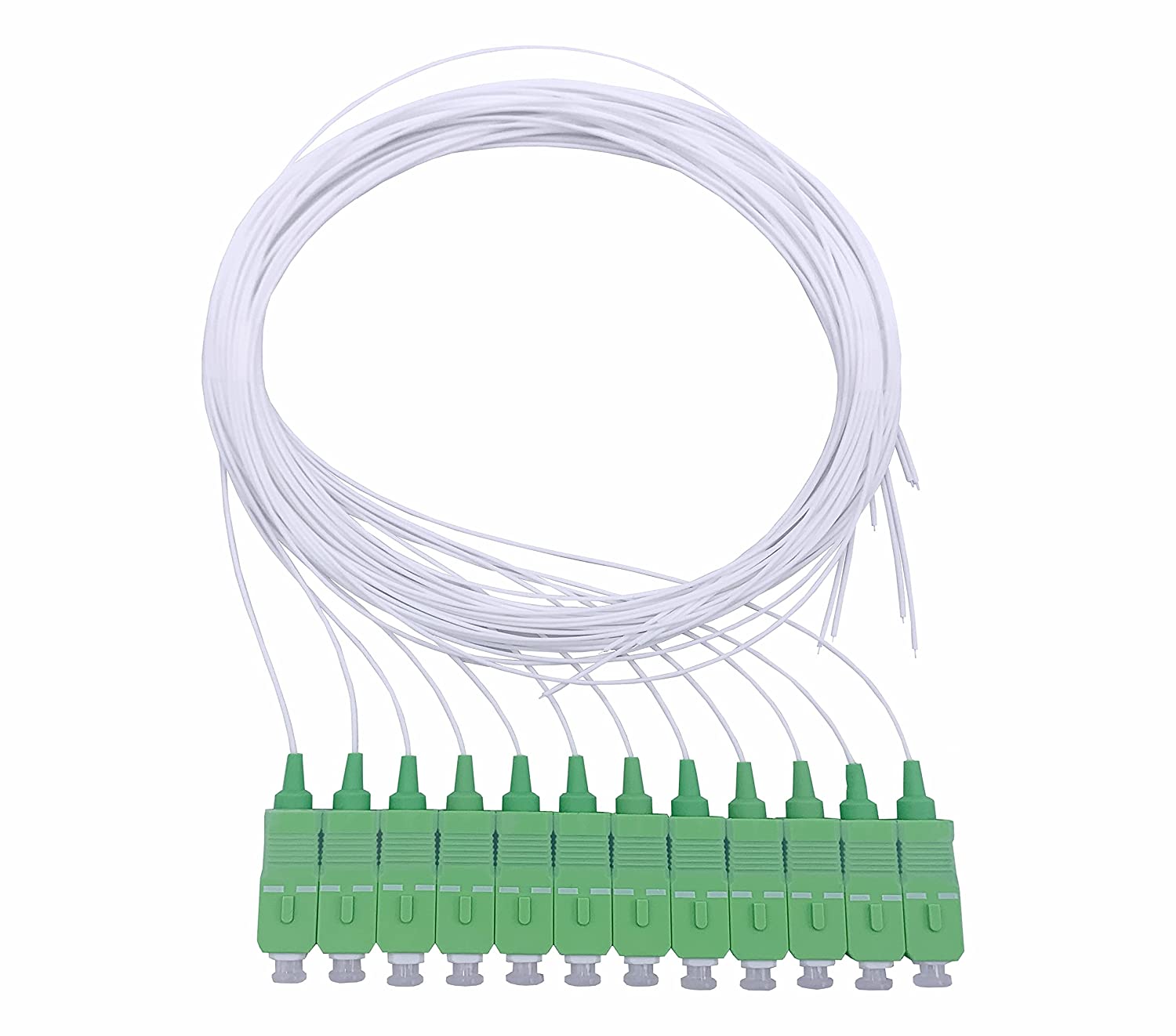A Comprehensive Guide to FTTX Fiber Pigtail Connectors
FTTX Fiber Pigtail Connectors
FTTX fiber pigtail connectors are essential components in the deployment of fiber optic networks. Understanding the features and specifications of these connectors is crucial for ensuring efficient network connectivity. With proper knowledge of FTTX fiber pigtail connectors, network operators can establish reliable and high-performance fiber optic networks that meet the demands of modern data transmission.
Importance of FTTX Fiber Pigtail Connectors:
"FTTX fiber pigtail connectors play a crucial role in establishing seamless connections within fiber optic networks, contributing to their overall reliability and performance."
Understanding Fiber Optic Pigtails
Importance of FTTX Fiber Pigtail Connectors
Fiber optic pigtails are essential for efficiently connecting fiber optic cables within FTTX networks, serving as the interface between the optical fiber and the equipment.
Understanding the role of FTTX fiber pigtail connectors is crucial for ensuring reliable network performance, as they directly impact the quality and stability of data transmission.
Types and Variants of FTTX Fiber Pigtail Connectors
There are various types of FTTX fiber pigtail connectors available in the market, including SC, LC, ST, and FC connectors, each with unique features and applications.
It's important to understand the differences between single-mode and multi-mode FTTX fiber pigtail connectors to ensure compatibility with specific network requirements and infrastructure.
Types of Fiber Optic Connectors
Overview of Fiber Optic Connector Types
Fiber optic connectors are crucial elements in FTTX networks, facilitating the seamless transmission of data through optical fibers. There are several commonly used types of fiber optic connectors, each with its unique features and applications. Some of the most prevalent connector types include:
SC Connectors: SC (Subscriber Connector) connectors are widely used in telecommunication and data communication applications. They are known for their simple push-pull latching mechanism, which ensures quick and secure connections.
LC Connectors: LC (Lucent Connector) connectors are popular due to their small form factor, making them ideal for high-density installations. They are also known for their low insertion loss and high precision alignment.
ST Connectors: ST (Straight Tip) connectors were once the most commonly used connectors in networking applications. They feature a bayonet-style coupling mechanism and are often utilized in industrial environments.
FC Connectors: FC (Ferrule Connector) connectors are frequently employed in high-vibration environments due to their threaded coupling mechanism, providing robust connections.
Understanding the distinct characteristics of these connector types is essential for selecting the most suitable option based on specific network requirements and environmental conditions.
Fiber optic connectors play a pivotal role in ensuring efficient data transmission within FTTX networks, offering diverse options to accommodate various network architectures and deployment scenarios.
Advantages and Disadvantages of Fiber Optic Connector Types
Each type of fiber optic connector comes with its own set of advantages and disadvantages that must be considered when designing or expanding FTTX networks:
Advantages:
SC, LC, ST, and FC connectors offer different form factors to suit various installation requirements.
These connector types provide reliable connections with low insertion loss, ensuring minimal signal degradation.
The diverse options available allow network operators to customize connectivity solutions based on specific infrastructure needs.
Disadvantages:
Different connector types may not be interchangeable without using hybrid adapters or conversion cables.
The cost associated with each type may vary, influencing overall network deployment expenses.
Understanding these pros and cons is crucial for making informed decisions regarding the selection and deployment of fiber optic connectors within FTTX networks.
Splicing and Testing Fiber Optic Cables
Splicing and Testing Fiber Optic Cables
Importance of Splicing in FTTX Networks
In the context of FTTX networks, splicing plays a critical role in ensuring seamless connectivity and optimal transmission of data. By understanding the significance of splicing, network operators can effectively manage the deployment and maintenance of fiber optic cables within their infrastructure. Splicing involves the permanent joining of two optical fibers to enable the transmission of light signals without disruption. This process is essential for extending the reach of fiber optic connections and creating a unified network that supports high-speed data transfer.
Testing Procedures for Fiber Optic Cables
Testing fiber optic cables is a fundamental aspect of maintaining network reliability and performance within FTTX environments. Through rigorous testing procedures, network operators can identify potential issues such as signal loss, attenuation, or physical damage to the cables. Various tools and equipment are utilized for conducting these tests, including optical time-domain reflectometers (OTDR) and optical power meters. These testing procedures ensure that the fiber optic cables meet industry standards and deliver consistent performance across the entire network infrastructure.
By emphasizing both splicing techniques and testing procedures, FTTX networks can achieve optimal connectivity while minimizing downtime and signal degradation.
Cable Management and Testing Equipment
Effective Cable Management Practices
Proper cable management is paramount in maintaining the integrity and performance of fiber optic networks within FTTX environments. By adhering to best practices for organizing and managing fiber optic cables, network operators can ensure seamless operation and facilitate efficient maintenance and troubleshooting processes.
Organizing Fiber Optic Cables: Implementing a structured approach to organizing fiber optic cables minimizes the risk of signal interference and simplifies future maintenance tasks. Using cable trays, racks, and appropriate labeling techniques enables easy identification and access to specific cables when needed.
Minimizing Cable Stress: Avoiding excessive bending or tension on fiber optic cables is crucial for preserving their signal transmission capabilities. Employing cable management solutions that alleviate stress on the cables helps maintain optimal performance and reduces the likelihood of signal loss or degradation.
Environmental Considerations: Understanding the impact of environmental factors such as temperature, humidity, and exposure to elements is essential for selecting suitable cable management solutions. Utilizing protective enclosures or conduits can safeguard fiber optic cables from potential damage due to environmental conditions.
Essential Testing Equipment for FTTX Networks
To uphold the performance and reliability of FTTX networks, it is imperative to utilize key testing equipment designed specifically for maintaining and troubleshooting fiber optic connectivity.
Optical Time-Domain Reflectometers (OTDR): OTDRs are instrumental in characterizing the quality of fiber optic connections by analyzing signal loss, identifying breaks or bends in the fibers, and determining overall cable integrity. They provide valuable insights into the condition of the network infrastructure.
Fiber Optic Inspection Probes: These probes enable detailed visual inspection of connector end-faces to identify any contamination or damage that may affect network performance. Regular inspections using these probes help prevent connectivity issues caused by debris or imperfections on connectors.
Light Sources and Power Meters: Light sources coupled with power meters form an essential pair for measuring optical power levels within the network. This combination allows technicians to verify signal strength, assess link loss, and troubleshoot potential issues affecting data transmission.
By leveraging effective cable management practices alongside advanced testing equipment, FTTX networks can maintain peak performance while proactively addressing potential connectivity challenges.
The Future of FTTX Fiber Pigtail Connectors
As technology continues to advance, FTTX fiber pigtail connectors are set to play an increasingly crucial role in the evolution of fiber optic networks. The ongoing innovation in FTTX fiber pigtail connectors is expected to drive enhanced efficiency and reliability in fiber optic connectivity, meeting the escalating demands for high-speed data transmission and network performance. Understanding the evolving technologies and standards in FTTX fiber pigtail connectors will be fundamental for future network deployments, ensuring seamless integration with cutting-edge optical infrastructure and emerging connectivity solutions.
See Also
The Future of Multi-Core Cabling in Telecommunications: Trends and Advancements in 2024
Exploring FTTH Network Deployment Benefits
Understanding FTTH Network Architecture and Fiber Optic Terminal Boxes
The Impact of Fiber Optic Fast Connectors in FTTH Networks
The Impact of FTTH, FTTN, FTTC, and FTTP in Fiber Optic Solutions
About US
Follow Us
AnetFiber company's main products are indoor and outdoor optical fiber cables, outdoor waterproof pre-connected fiber-to-the-home products, PLC optical fiber splitters, optical fiber jumpers and pigtails, MTP®/MPO high-density big data product solutions, optical fiber field quick connectors and research and development molding, injection molding and production of optical fiber distribution boxes, optical fiber chassis cabinets, the market has expanded to the world, Europe, America, Asia, the Middle East and Latin America.
Address
Shenzhen City, Baoan District, Yanluo Street, Tangxiayong Community, Yangyong Industrial Road, Tonggangda New Energy Vehicle Park 406
Contacts
+86 199 2655 3586




